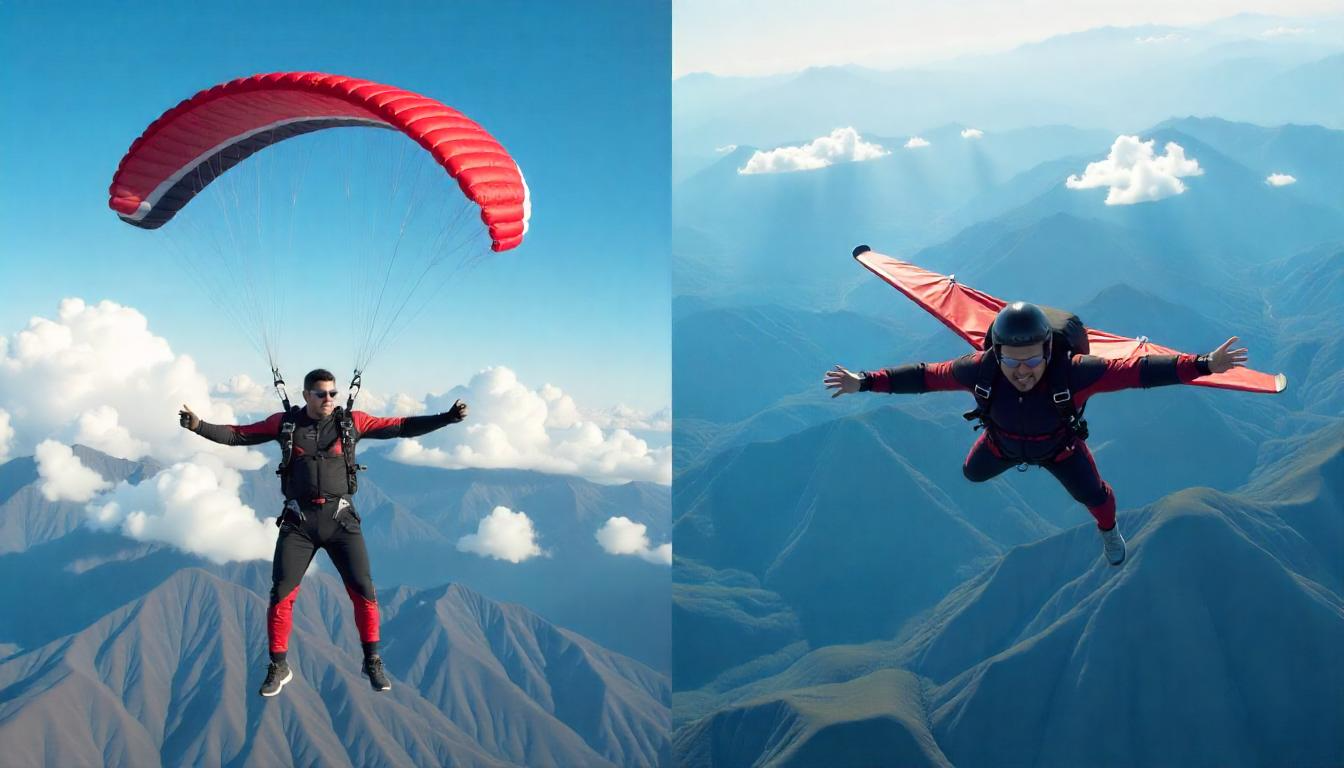Your first skydiving experience is something you’ll never forget – a thrilling mix of excitement, nerves, and adrenaline. The thought of jumping out of a plane from thousands of feet above the ground can feel overwhelming, but trust me, the feeling of flying through the sky is unmatched. Skydiving is not just about free fall; it’s about conquering fears, stepping out of your comfort zone, and embracing the unknown.
As you move towards your first skydiving experience, several questions come to your mind – is it safe? What should I wear? What if the parachute doesn’t open? These questions are very normal and come to every beginner’s mind. In this article, we will answer all these questions so that you are fully prepared for your first jump.
The craze for skydiving is growing rapidly these days, and people from all over the world are excited to cross it off their bucket list. The best part is that for the first time, you get the option of doing tandem skydiving, where you jump with an experienced instructor. This means you just have to enjoy and the instructor will handle everything else. But it is important to understand that skydiving requires not only physical but also mental preparation. You have to face your fear and have faith in yourself. The more you prepare, the more smooth and enjoyable your experience will be.
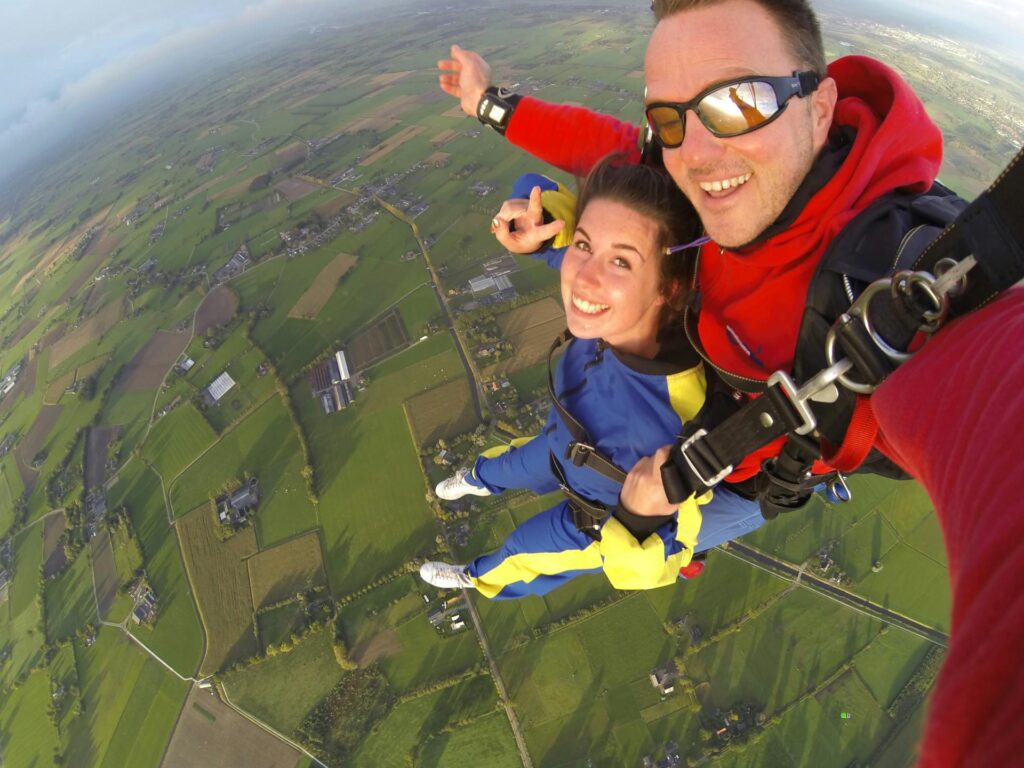
In this guide we’ll show you step-by-step how to prepare mentally and physically, what things are necessary, and how to choose a skydiving center. All of these tips are designed to give you a safe and memorable experience. So let’s get ready for your first skydiving experience and make your dream of conquering the heights of the sky come true!
Understanding Skydiving Basics
Only one thing comes to mind when you hear the name of skydiving – free fall and adrenaline rush! But your first skydiving experience can be a lot more enjoyable if you understand the basic things. Skydiving is not just about falling in the air, rather it is a well-planned and safe activity that happens with strict safety protocols.
What is Skydiving?
Skydiving is an adventure sport in which you jump from a plane and land safely on the ground using a parachute. It happens in two main phases – free fall and canopy ride. Free fall is when you drop into the air before deploying the parachute. Canopy ride is when the parachute opens and you land softly.
Types of Skydiving for Beginners
Tandem Skydiving: This is the most popular and beginner-friendly option. You are harnessed with an experienced instructor who controls everything – you just have to enjoy it.
Static Line Jump: The parachute automatically opens as you jump from the plane. It is mostly used for military training, but civilians can try it too.
Accelerated Freefall (AFF): This is a little more advanced where you jump alone, but with instructors. This is not recommended for the first time.
How safe is skydiving?
You will be surprised to know that skydiving is very safe. Technology and safety protocols make accidents very rare. Modern parachutes come with backup systems that open automatically in an emergency. The safety record of tandem skydives in the USA is very impressive – the average is one injury per 10,000 jumps.
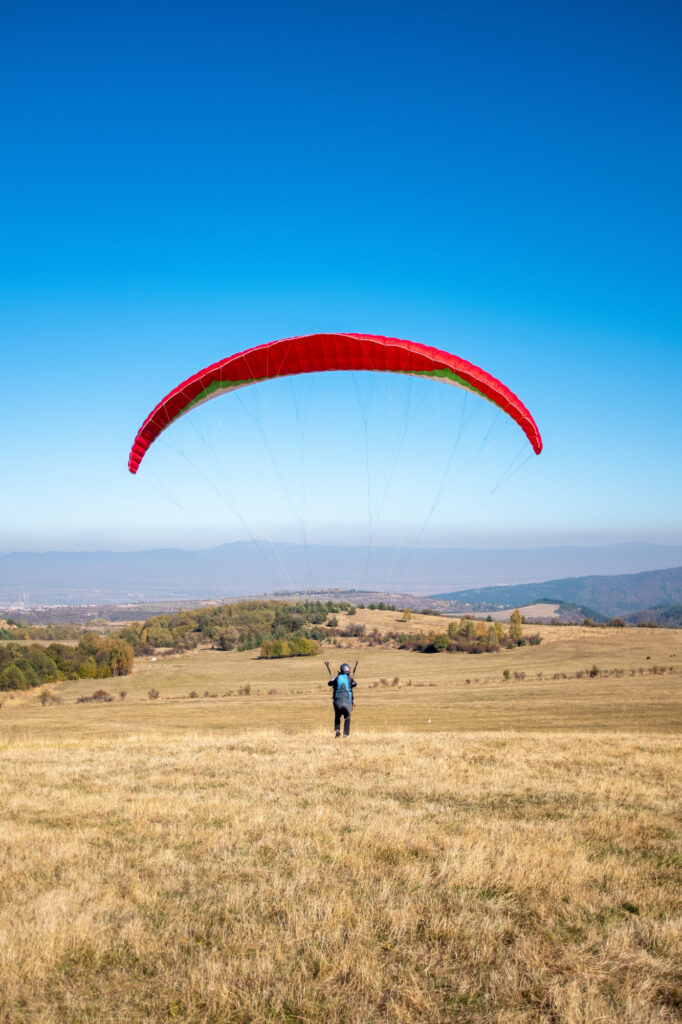
Mental Preparation
Your first skydiving experience requires as much mental strength as physical preparation. The first and the biggest challenge is the fear of heights. This fear is absolutely normal and every new skydiver faces it. The best way to deal with this fear is to prepare yourself mentally and keep your thoughts positive. Visualization is a very powerful technique – close your eyes and imagine that you are smoothly jumping from a plane, enjoying the wind and landing safely. This simple practice can reduce your anxiety considerably.
Breathing exercises also help. Whenever you feel nervous, take deep breaths and bring your focus back. Controlled breathing helps calm your mind and allow you to focus on the situation. There’s no need to think too much before skydiving. Overthinking only increases fear. So trust your instructor – their experience and guidance are for your safety and comfort.
Watching videos and testimonials helps build your confidence. When you see other people successfully jump, you may feel confident that you can do it too. It is very important to understand what you are expecting – what will happen at each step, what will be the environment of the plane and how the landing process takes place. When you know all this in advance, you feel mentally prepared. The most important thing is to look at skydiving as a fun and learning experience.
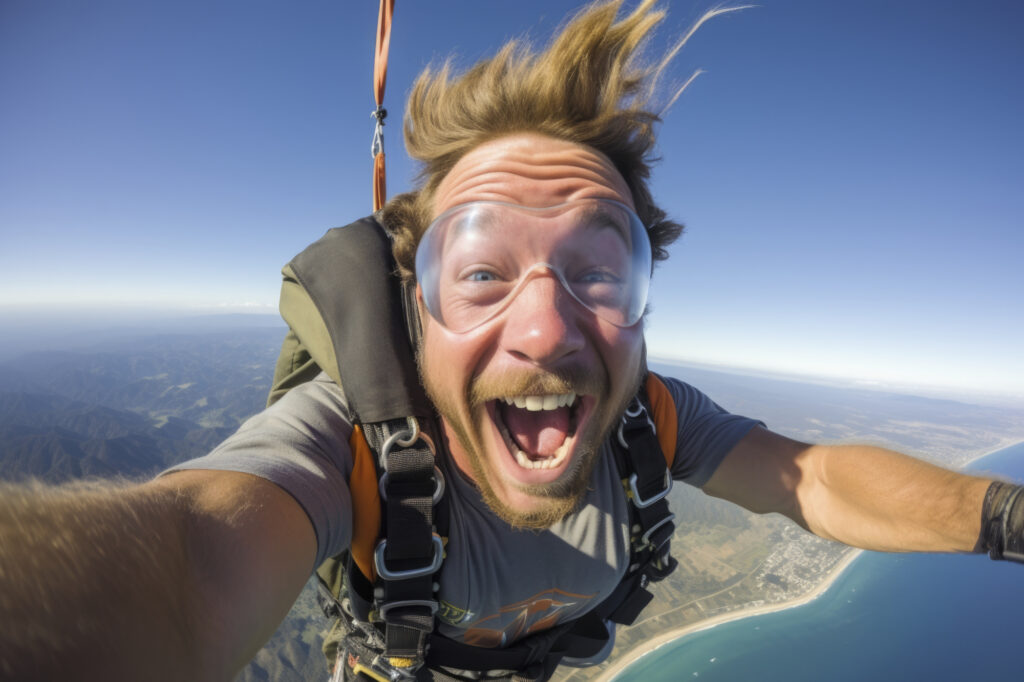
Physical Preparation
Your first skydiving experience requires not just mental readiness but also physical preparation. You don’t need to be an Olympic athlete for skydiving, but being a little fit and keeping your body active helps a lot. Basic fitness makes you feel more relaxed and comfortable, especially when going through the free fall and landing phases. Light stretching and flexibility exercises help so that your muscles stay relaxed and you don’t feel any stiffness.
On the day of skydiving, the right choice of clothes also matters a lot. Wear comfortable, fitted but not loose clothes that are suitable for the weather. Joggers, track pants and t-shirts are best. Avoid jeans or tight clothes as they can be uncomfortable with the harness. Shoes should be securely tied, like sneakers or sports shoes. Never wear flip-flops or sandals. Hydration and nutrition are also very important. Avoid heavy or oily food before the jump – eat light and nutritious meals that give you energy and don’t make you feel uncomfortable. Try to stay hydrated throughout the day, but don’t drink too much water shortly before the jump so you don’t feel uncomfortable.
Choosing the Right Skydiving Center
Choosing the right skydiving center is important to make your first skydiving experience safe and memorable. Every center has different experience and safety standards, so it is important to do a little research. The first step is to shortlist certified and reputed skydiving centers. Centers affiliated with the USPA (United States Parachute Association) or some other official body are trusted more as they follow strict safety protocols.
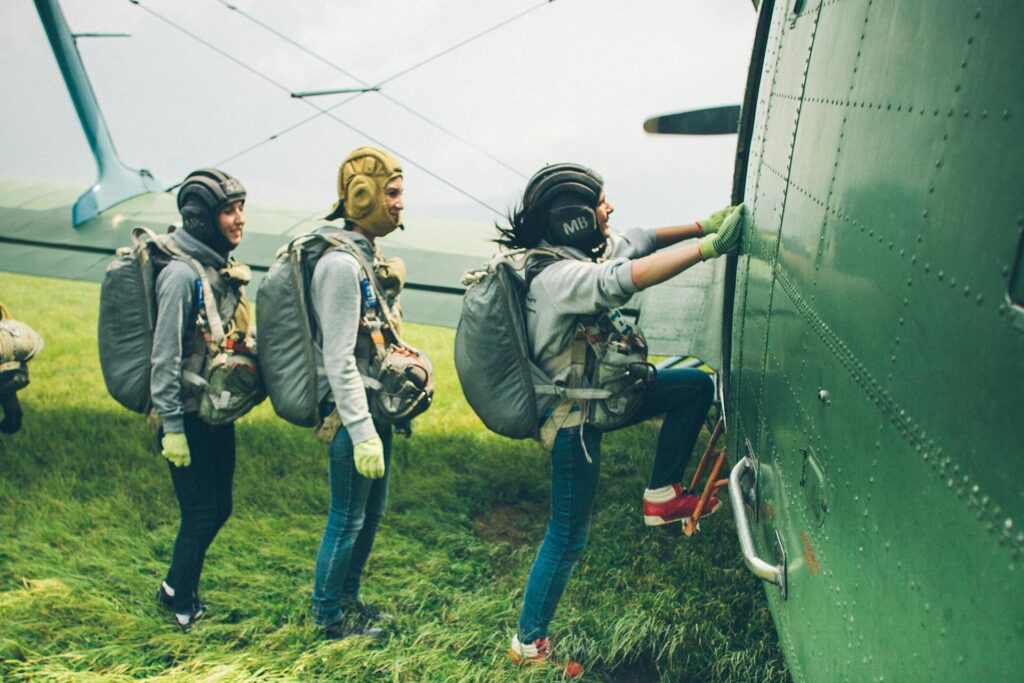
You should also check the experience and credentials of your instructor. Good skydiving centers have licensed and experienced instructors who have experience of thousands of jumps. Their experience is very important for your safety and comfort. If possible, visit the skydiving center to check out their facilities and equipment. It’s important that the equipment is new and well-maintained. You can also ask the center how they handle emergency situations and how backup systems work.
Reviews and testimonials are also very helpful. Looking at online reviews can also give you a good idea of what other people’s experiences were like. Choose center which has consistent positive reviews. Skydiving can be quite expensive, but don’t go for the cheapest option. Always prioritize quality and safety. The average tandem skydiving cost is around $200-$300, varying depending on location and facilities. Before booking, it’s important to check if the center offers additional services, such as video recording or photo packages. You can avail these services to make your first skydiving experience memorable.
The Training Process
The training process is very important for your first skydiving experience. This process prepares you mentally and physically and explains each step so that you feel safe and confident during the jump. Skydiving is not just about jumping from a plane – before that you have to go through a structured training which is a must for every beginner.
Pre-Jump Briefing
The first step of training is the pre-jump briefing. When you arrive at the skydiving center, you are first given an orientation which gives a basic overview of skydiving. In this briefing you are told how the jump process happens, what to do in free fall and how you should react during landing. Instructors explain you step-by-step so that you can understand each phase.
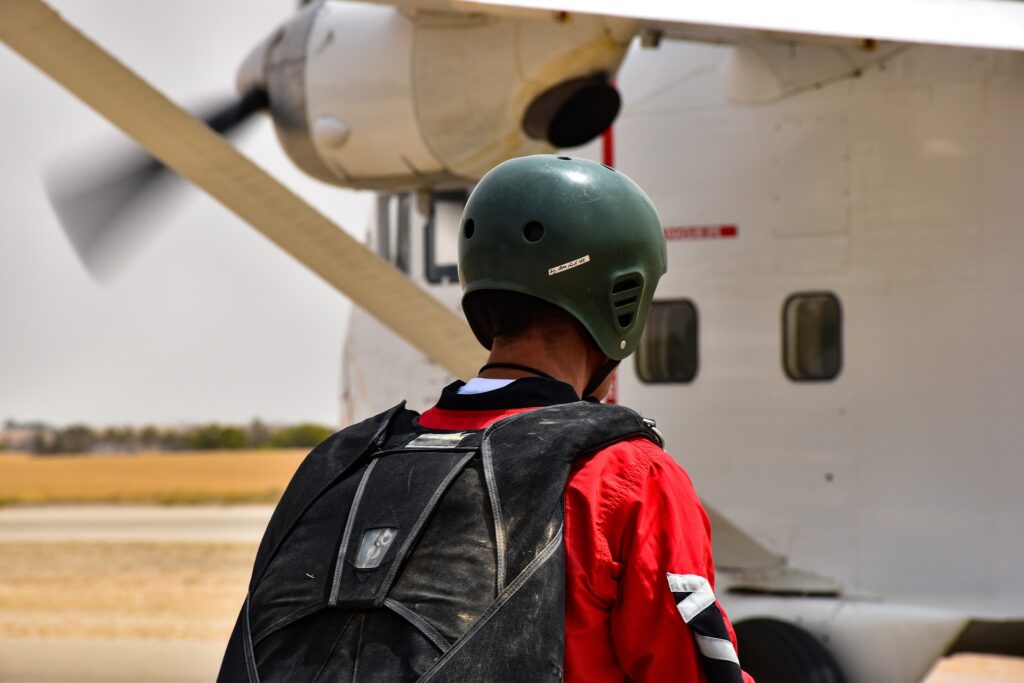
Learning the Equipment
The next part of training is understanding the skydiving equipment. You are told in detail about the parachute, harness, altimeter and goggles. Instructors show you how the parachute works and how you can handle an emergency. For tandem jumps, your instructor controls everything, but still having basic knowledge is important.
You practice wearing and adjusting the harness. The instructor ensures that the harness fits your body perfectly. In skydiving, the harness forms a connection between you and the instructor, so it is important that it is set correctly.
Body Positioning and Exit Practice
A crucial part of skydiving is body positioning. When you jump from a plane, proper body alignment is very important so that your jump is smooth. In training, you are taught the belly-to-earth position, which is most stable during free fall. You are told what position your hands and feet should be in during the jump. You also practice how to jump when exiting the plane. This part can be a little nerve-wracking, but the instructor teaches you with confidence.
Emergency Procedures
An important part of training is emergency procedures. Although the risk is much lower in tandems, you are still told what to do if the parachute doesn’t open on time. Modern parachutes have automatic activation devices (AAD) that self-deploy the parachute if the instructor cannot react.
Practice and Repetition
Confidence comes from repetition in skydiving. You are made to practice on the ground and have the opportunity to repeat each step. These exercises help you build muscle memory so that you remain relaxed during the jump.
The goal of the training process is to prepare you and give you the full skydiving experience. When you complete the training, you feel 100% ready for your first skydiving experience.
What to Expect on Jump Day
It’s normal to feel a mix of excitement and a little nervousness on jump day – it’s the most thrilling part of your first skydiving experience! When you arrive at the skydiving center, everything happens as a structured process so that you feel relaxed and prepared.
Arrival and Check-in
First thing in the morning, you need to arrive at the center on time. During check-in, you’ll need to sign some paperwork, which includes waivers and consent forms. This is standard procedure and happens at every center. If you’ve booked online beforehand, this process is over quickly.
Final Briefing and Gear-up
After the check-in, you get a final briefing in which the instructor explains all the safety procedures and steps for the jump. This is a good time to clear any questions or doubts you may have. Then you are geared up – you are given a harness, jumpsuit and goggles to wear. The instructor ensures that everything fits properly.
Plane Ride – The Build-Up
When you sit in the plane, the adrenaline slowly builds. The plane gradually gains altitude and you feel excitement and a little anxiety inside. This is the perfect time to relax and take deep breaths. You see the ground from the plane and realize how special this moment is. Instructors guide you at every step and maintain positive vibes so that your confidence remains intact.
The Jump – Moment of Truth
When you reach near the door of the plane, the cold and roar of the wind is heard. The instructor attaches you to the harness and prepares you for the jump. 3…2…1 and you are out of the plane! First there is a free fall of a few seconds which is an adrenaline pumping experience. During this time you fly in the air and enjoy the whole moment.
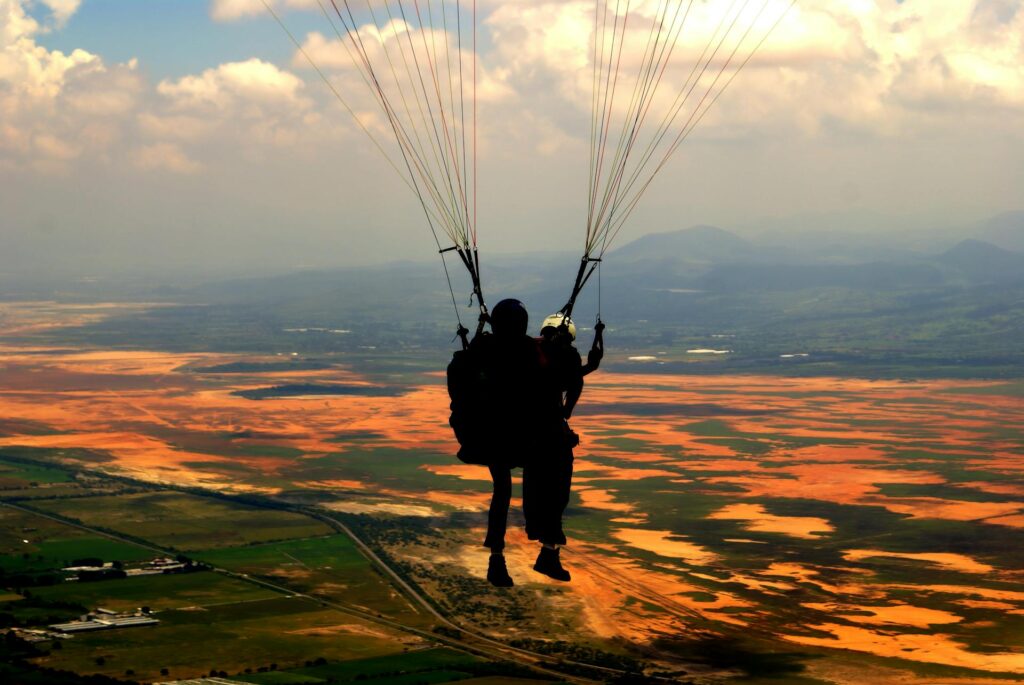
Parachute Deployment and Landing
This phase is calm and peaceful. You get a view of the landscape which becomes a lifetime memory. The landing is smooth and you feel like a winner as soon as you safely touch the ground!
Your first skydiving experience is unforgettable – an adventure you will always remember!
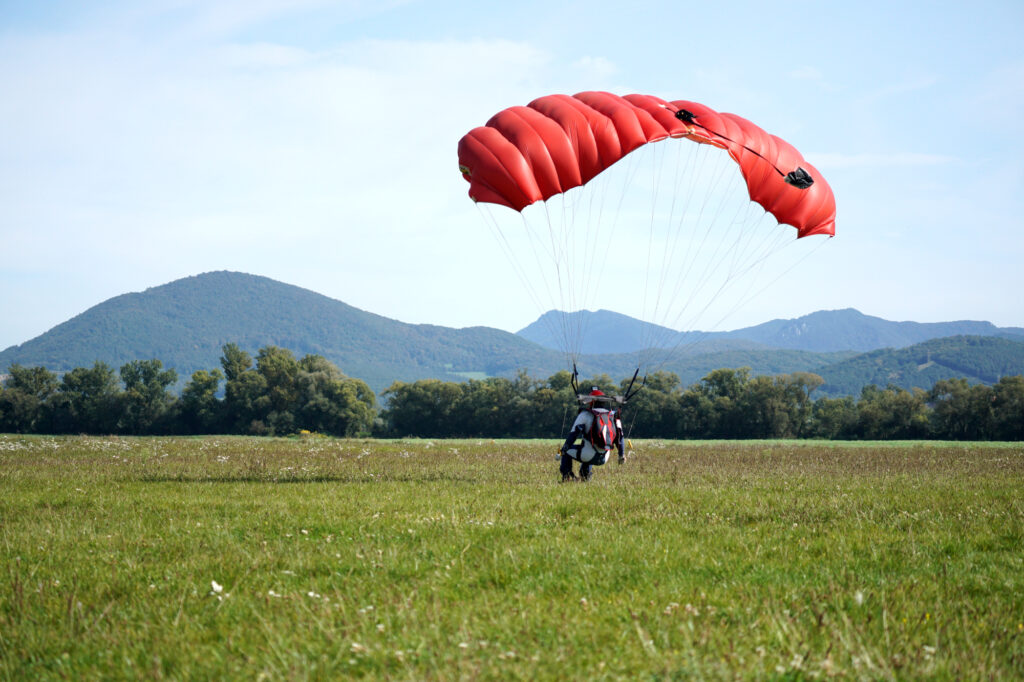
Common Skydiving FAQs
Many questions arise in the minds of people before skydiving, especially when it is your first skydiving experience. Here are answers to some common FAQs that will clear your doubts and make you confident.
- Is skydiving safe?
Yes! Skydiving is very safe, especially tandem skydiving. Certified centers follow strict safety protocols and instructors are highly trained. Parachutes have backup systems that automatically deploy in case of emergency. - What is the minimum age for skydiving?
The minimum age is 18 years in most centers. In some places, people as young as 16 can skydive with parental consent. - Do I need to be physically fit?
Basic fitness is important but you don’t need to be a professional athlete. If you weigh between 100-110 kg and are physically active, you are eligible for skydiving. - Can I skydive alone on my first jump?
No. The first jump is a tandem jump with an instructor. You need training and certification for solo jumps. - How long does skydiving take?
The entire experience from plane ride to landing takes about 20-30 minutes. Free fall lasts only 30-60 seconds and the parachute ride lasts 5-7 minutes.
The more clear the questions are during your first skydiving experience, the more you will enjoy the jump!
Conclusion
Your first skydiving experience is an adventure that becomes an unforgettable chapter of your life. Skydiving is not just a thrill, but a life-changing experience that allows you to conquer your fears and push your limits. When you jump from the plane, you forget your fears and feel a new level of freedom and excitement. Training, mental and physical preparation, and choosing the right skydiving center all help to give you a safe and smooth experience. Remember that skydiving is a highly regulated sport, where safety is given utmost importance.
So, if you have thought about your first skydiving experience, then leave your fears behind, jump with confidence and enjoy this thrilling adventure! After jumping once, you will feel that you have faced the biggest challenge of your life, and now you are ready to face any challenge!


